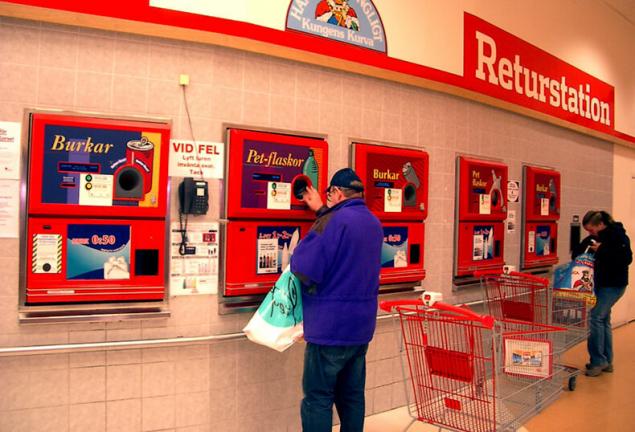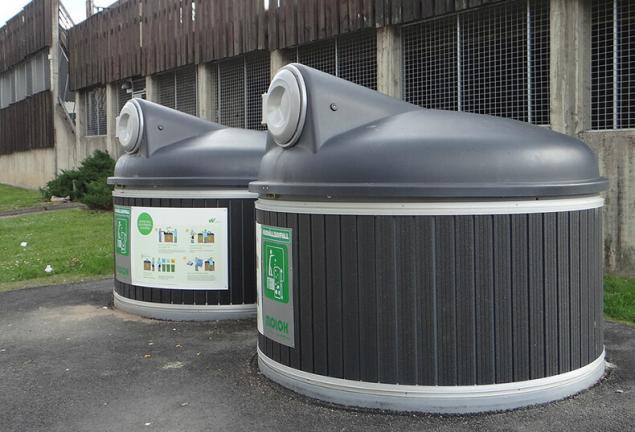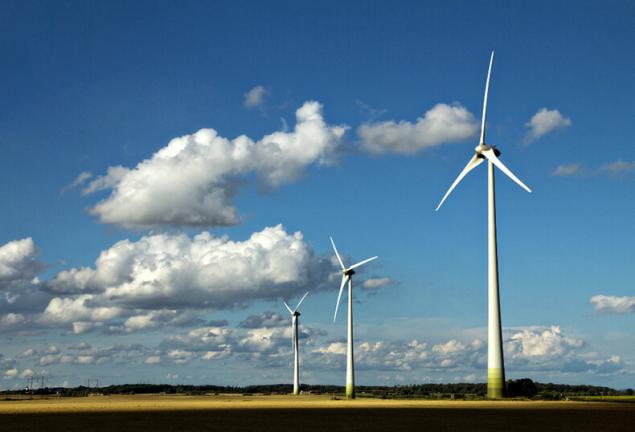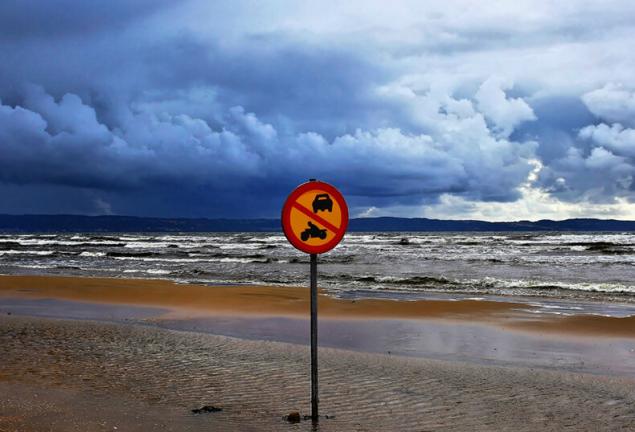How does the separate collection of waste in Sweden
 Bashny.Net
Bashny.Net
In Sweden only 7% of waste sent to landfill: everything else is recycled one way or another. Largely this has been achieved through the correct sorting of rubbish and the special relationship of the government to the ecology of the country.

As the waste to separate, taught in school...
Separate waste collection in Sweden have attended only at the end of the last century, later than many other European countries — but in a short time has achieved great success.
The Swedes took responsibility for sorting and for a couple of decades used to lay trash on fractions: near houses usually are containers for paper, glass, metal, plastics, food residues and non-recyclable waste.

Even a small child will not come to mind to throw the wrapper in the wrong for her container. First, because of wrong sorting threaten substantial fines, and secondly, because the Swedes from a young age are taught to throw garbage properly.
In kindergartens crumbs talk about how to segregate waste categories, it is not as easy as it seems at first glance. For example, if the package consists of several materials, they must be separated from each other and to put each in the container: for example, to remove from glass bottle label and send it to the paper and the container itself to the glass.

With care about people
By the way, glass is also sorted: color glass goes in one container, and transparent in another. Plastic bottles and tin cans can be thrown away, and handed over in points of reception and receive the money.
As in many European countries, the price of the drink is usually included in the price of the package: to get her back "in your pocket" you can, if you take the bottle in a special apparatus, which is usually located in the same place in the store.
This system is common in Europe, but in Sweden it is of particular concern for the people near the camera there is always the ballot box with empty bags, which were brought Tara and the sink then to wash hands, and also a drying rack or a paper towel roll.
Generally in Sweden take care of, to make separate waste collection as comfortable as possible for people. And if, for example, bulky waste, old furniture, appliances, construction waste is prohibited to dump in local containers, you have done everything possible to make it easy to take in special points of reception.
Take the garbage for free, and gathering places are within walking distance — one item at 10000-15000 inhabitants.
Also in every village there is costanzia located most often at gas stations, which take from the population of hazardous waste: chemicals, paints, varnishes, batteries, aerosol cans, fluorescent lamps.
And in the pharmacy you can always take expired medicines. There you will be given a special container for used syringes and needles, which then again can be taken at the pharmacy.

Underground musorofiti
Due to such thorough primary sorting of garbage to recycling is much cheaper. And when you consider that private landlords are still paying for waste removal, it turns out that to recycle waste in Sweden even beneficial.
Speaking of waste different fractions are transported to different days of the week. Every morning the Swedes living in private houses, and roll to the edge of the carriageway of the container with the type of waste that should get it today. And the state easier to control the sorting.
In some cities in Sweden are using this type of transporting garbage, as an underground duct. It was first tried in this country in 1961.
With this method of garbage collection is visible above the ground just the tip of the urn with a hole for waste, and underground is the main funded part.
Several times a day the accumulated scum with the help of a strong airflow is sucked into a sewer tunnel with a large diameter, which are submitted to the Central receiving station. Here the waste is compressed in containers and sent to the station or the processing or in the incinerator.

The problem of Sweden — a shortage of garbage
Directly on the dump is sent only 7% of waste — the rest, the Swedes have learned to use for the benefit of residents of the country. Part of the waste (e.g., glass, plastic, paper) is sent to the relevant enterprises involved in processing.
The other part of the waste is burned with use — heat and electricity, which is produced in special waste incineration plants (WIP) is directed to the provision of urban farms. So, the supply of electricity and heat in Stockholm 45% provided by MSZ. Also, from waste biogas, which is used for the needs of urban transport.
In General, the Swedes learned how to use MSW in the most different spheres of life. In the end, the number of landfills in the country has plummeted, so much so that the Swedish people have become... not enough debris.
The shortage of waste threatened to become a serious problem, because the Swedes had nothing to heat their homes and nothing to generate electricity. But to the rescue came the neighbors: Norway expressed readiness to deliver annually Sweden 800 000 tons of garbage.

15 acocella
Swedish incineration plants use the most advanced technology, resulting in the number of harmful emissions produced by burning debris and falling into the atmosphere, is less than 1%.
Also managed to reduce about 50% the amount of harmful substances that enter the ash.
In the end, Stockholm is one of the cleanest capitals in Europe, despite the fact that this town is the incinerator.
The Swedish Parliament and government in 1999 approved 15 environmental goals towards which it is expected to come no later than 2020.
Clean air, groundwater, sustainable lakes and watercourses; the natural state of wetlands; a balanced marine environment, sustainable coastal areas and archipelagos; no eutrophication; natural acidification only; the richness and diversity of forests; stable farmland; majestic mountain areas; a good urban environment; toxic environment; radiation safety; a protective ozone layer; a reduced impact on the climate — these objectives appear clearly, but to achieve them is not so easy.

Independence from oil
The Prime Minister of Sweden Stefan Lofven said at the UN General Assembly that his country plans to become the first country in the world to abandon fossil fuels. And knowing that Sweden currently provides for its own alternative energy by two thirds, to him you can believe it.
Now in the country many private homeowners use solar panels to generate electricity and ground heat to provide the house with heat and hot water.
For the device last under the ground dug a complex system of plastic pipes which uses the temperature difference for space heating. Many homes use wind energy. And, ideally, in the future every house will be provided with alternative sources of energy: according to the statement of Stephen Laffey, the government will help all wishing to refurbish their homes, making them more energy efficient.
Additional funds the state plans to allocate for the purchase of environmentally friendly public transport, the creation of repositories of electricity and conducting research related to improving the methods of storage of electricity.
To reduce dependence on oil and reduce the pollution of city streets, the Swedish government ordered the transfer buses, trucks and taxis on the ecological types of fuel.
It is planned that by 2020 all vehicles providing services on transportation of passengers in the Swedish cities will run on biogas from sewage and waste in the food industry.

Clean sea and untouched forest
Great attention Sweden pays to the purity of the Baltic sea, problems which are particularly serious: industrial plants and water treatment plants are polluting the sea with heavy metals, chemical substances, wastewater and hazardous toxins.
In Sweden there is a budget item of expenses on financing marine conservation activities. But this is exactly the problem that cannot be solved alone — for the global results of the joint effort of countries with access to the Baltic sea.
But in terms of pure nature on the other side, Sweden has no equal in its time, it became the first European country to establish national parks. It was over a hundred years ago, and now the country has 29 parks.
The attitude of the Swedes towards them, indeed, as a national asset in such areas is allowed for Hiking and Cycling trips, but not commuting by car, moped, motorcycle. On the five large lakes of Sweden prohibited to fish without a license and is totally prohibited use of the network.
How colors affect our body and state
Russian catch phrase: the secret meaning
And so as not to harm the animal world, in the period when the animals give birth, it is forbidden to walk with dogs near their habitats — dogs can scare off females and their offspring.
Summer in national parks is forbidden to light fires, and on the cliffs fire is always prohibited — it can lead to cracks. And such restrictions are numerous. However, the Swedes have long got used to them and they do not prevent to enjoy nature and a stroll through one of the most clean forests of Europe.published
Author: Asya Malyutina
P. S. And remember, just changing your mind — together we change the world! ©
Source: recyclemag.ru/article/kak-ustroen-razdelnyiy-sbor-musora-v-shvecii

As the waste to separate, taught in school...
Separate waste collection in Sweden have attended only at the end of the last century, later than many other European countries — but in a short time has achieved great success.
The Swedes took responsibility for sorting and for a couple of decades used to lay trash on fractions: near houses usually are containers for paper, glass, metal, plastics, food residues and non-recyclable waste.

Even a small child will not come to mind to throw the wrapper in the wrong for her container. First, because of wrong sorting threaten substantial fines, and secondly, because the Swedes from a young age are taught to throw garbage properly.
In kindergartens crumbs talk about how to segregate waste categories, it is not as easy as it seems at first glance. For example, if the package consists of several materials, they must be separated from each other and to put each in the container: for example, to remove from glass bottle label and send it to the paper and the container itself to the glass.

With care about people
By the way, glass is also sorted: color glass goes in one container, and transparent in another. Plastic bottles and tin cans can be thrown away, and handed over in points of reception and receive the money.
As in many European countries, the price of the drink is usually included in the price of the package: to get her back "in your pocket" you can, if you take the bottle in a special apparatus, which is usually located in the same place in the store.
This system is common in Europe, but in Sweden it is of particular concern for the people near the camera there is always the ballot box with empty bags, which were brought Tara and the sink then to wash hands, and also a drying rack or a paper towel roll.
Generally in Sweden take care of, to make separate waste collection as comfortable as possible for people. And if, for example, bulky waste, old furniture, appliances, construction waste is prohibited to dump in local containers, you have done everything possible to make it easy to take in special points of reception.
Take the garbage for free, and gathering places are within walking distance — one item at 10000-15000 inhabitants.
Also in every village there is costanzia located most often at gas stations, which take from the population of hazardous waste: chemicals, paints, varnishes, batteries, aerosol cans, fluorescent lamps.
And in the pharmacy you can always take expired medicines. There you will be given a special container for used syringes and needles, which then again can be taken at the pharmacy.

Underground musorofiti
Due to such thorough primary sorting of garbage to recycling is much cheaper. And when you consider that private landlords are still paying for waste removal, it turns out that to recycle waste in Sweden even beneficial.
Speaking of waste different fractions are transported to different days of the week. Every morning the Swedes living in private houses, and roll to the edge of the carriageway of the container with the type of waste that should get it today. And the state easier to control the sorting.
In some cities in Sweden are using this type of transporting garbage, as an underground duct. It was first tried in this country in 1961.
With this method of garbage collection is visible above the ground just the tip of the urn with a hole for waste, and underground is the main funded part.
Several times a day the accumulated scum with the help of a strong airflow is sucked into a sewer tunnel with a large diameter, which are submitted to the Central receiving station. Here the waste is compressed in containers and sent to the station or the processing or in the incinerator.

The problem of Sweden — a shortage of garbage
Directly on the dump is sent only 7% of waste — the rest, the Swedes have learned to use for the benefit of residents of the country. Part of the waste (e.g., glass, plastic, paper) is sent to the relevant enterprises involved in processing.
The other part of the waste is burned with use — heat and electricity, which is produced in special waste incineration plants (WIP) is directed to the provision of urban farms. So, the supply of electricity and heat in Stockholm 45% provided by MSZ. Also, from waste biogas, which is used for the needs of urban transport.
In General, the Swedes learned how to use MSW in the most different spheres of life. In the end, the number of landfills in the country has plummeted, so much so that the Swedish people have become... not enough debris.
The shortage of waste threatened to become a serious problem, because the Swedes had nothing to heat their homes and nothing to generate electricity. But to the rescue came the neighbors: Norway expressed readiness to deliver annually Sweden 800 000 tons of garbage.

15 acocella
Swedish incineration plants use the most advanced technology, resulting in the number of harmful emissions produced by burning debris and falling into the atmosphere, is less than 1%.
Also managed to reduce about 50% the amount of harmful substances that enter the ash.
In the end, Stockholm is one of the cleanest capitals in Europe, despite the fact that this town is the incinerator.
The Swedish Parliament and government in 1999 approved 15 environmental goals towards which it is expected to come no later than 2020.
Clean air, groundwater, sustainable lakes and watercourses; the natural state of wetlands; a balanced marine environment, sustainable coastal areas and archipelagos; no eutrophication; natural acidification only; the richness and diversity of forests; stable farmland; majestic mountain areas; a good urban environment; toxic environment; radiation safety; a protective ozone layer; a reduced impact on the climate — these objectives appear clearly, but to achieve them is not so easy.

Independence from oil
The Prime Minister of Sweden Stefan Lofven said at the UN General Assembly that his country plans to become the first country in the world to abandon fossil fuels. And knowing that Sweden currently provides for its own alternative energy by two thirds, to him you can believe it.
Now in the country many private homeowners use solar panels to generate electricity and ground heat to provide the house with heat and hot water.
For the device last under the ground dug a complex system of plastic pipes which uses the temperature difference for space heating. Many homes use wind energy. And, ideally, in the future every house will be provided with alternative sources of energy: according to the statement of Stephen Laffey, the government will help all wishing to refurbish their homes, making them more energy efficient.
Additional funds the state plans to allocate for the purchase of environmentally friendly public transport, the creation of repositories of electricity and conducting research related to improving the methods of storage of electricity.
To reduce dependence on oil and reduce the pollution of city streets, the Swedish government ordered the transfer buses, trucks and taxis on the ecological types of fuel.
It is planned that by 2020 all vehicles providing services on transportation of passengers in the Swedish cities will run on biogas from sewage and waste in the food industry.

Clean sea and untouched forest
Great attention Sweden pays to the purity of the Baltic sea, problems which are particularly serious: industrial plants and water treatment plants are polluting the sea with heavy metals, chemical substances, wastewater and hazardous toxins.
In Sweden there is a budget item of expenses on financing marine conservation activities. But this is exactly the problem that cannot be solved alone — for the global results of the joint effort of countries with access to the Baltic sea.
But in terms of pure nature on the other side, Sweden has no equal in its time, it became the first European country to establish national parks. It was over a hundred years ago, and now the country has 29 parks.
The attitude of the Swedes towards them, indeed, as a national asset in such areas is allowed for Hiking and Cycling trips, but not commuting by car, moped, motorcycle. On the five large lakes of Sweden prohibited to fish without a license and is totally prohibited use of the network.
How colors affect our body and state
Russian catch phrase: the secret meaning
And so as not to harm the animal world, in the period when the animals give birth, it is forbidden to walk with dogs near their habitats — dogs can scare off females and their offspring.
Summer in national parks is forbidden to light fires, and on the cliffs fire is always prohibited — it can lead to cracks. And such restrictions are numerous. However, the Swedes have long got used to them and they do not prevent to enjoy nature and a stroll through one of the most clean forests of Europe.published
Author: Asya Malyutina
P. S. And remember, just changing your mind — together we change the world! ©
Source: recyclemag.ru/article/kak-ustroen-razdelnyiy-sbor-musora-v-shvecii
Tags
See also
Waste sorting (11 photos)
11 Easy Steps to a life without garbage and bustle
Sorting and recycling facilities in Japan
How to build a business in the field of waste management
In Nigeria looking for unusual ways of dealing with waste
What is the double-decker train Moscow-Adler inside
As I went to work as a programmer in Sweden (Part 1)
Muscovite has forced officials to install tanks for waste sorting
The problem of paper waste
















